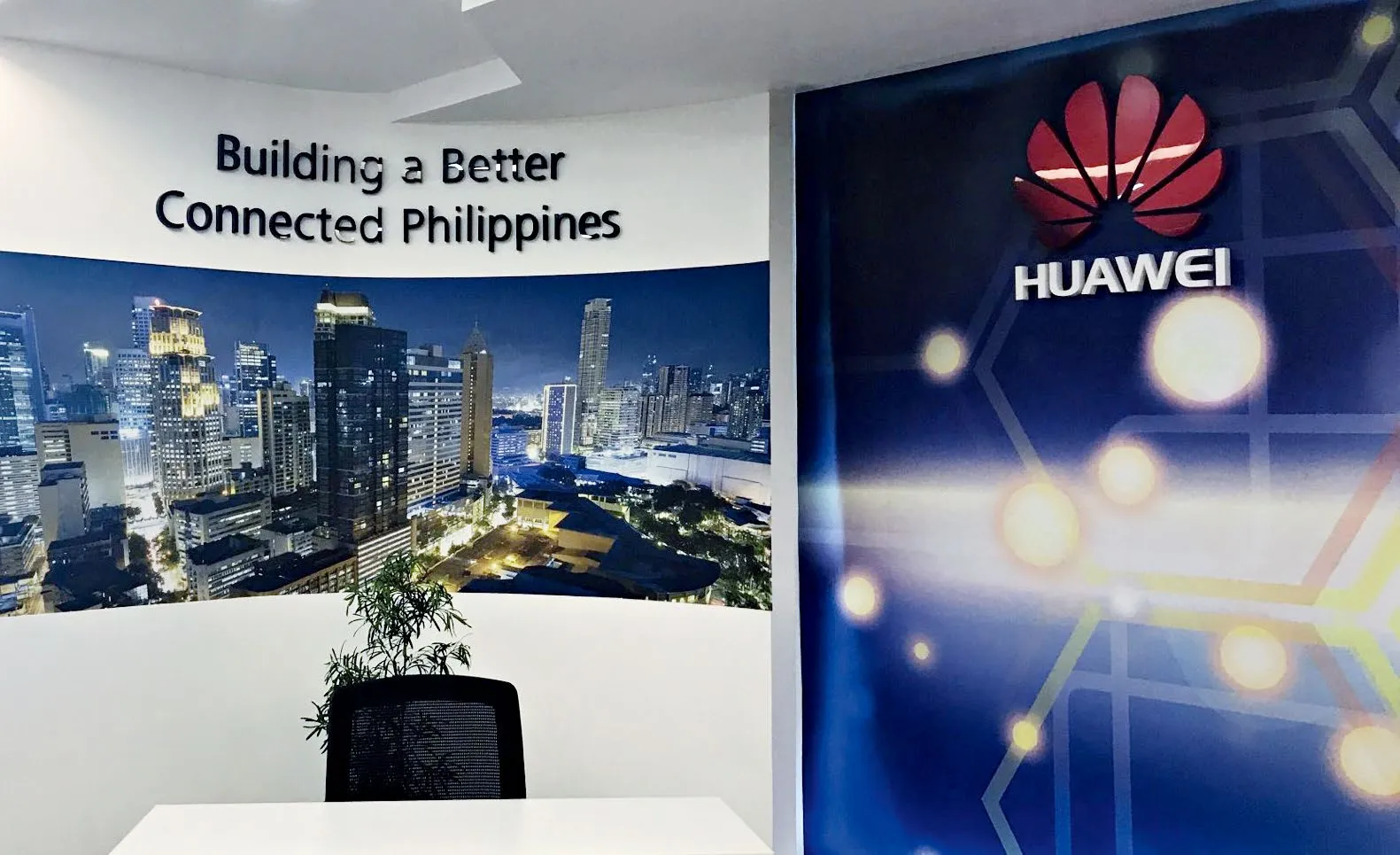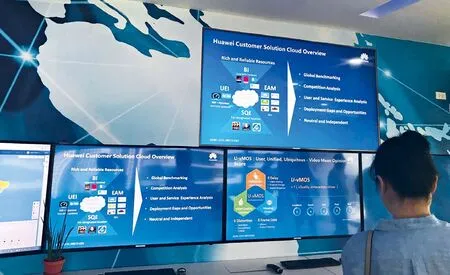MULTI-FACETED APPROACH FOR HUAWEI IN THE PHILIP
By He Jing
Chinese tech giant maintains focuson R&D as it expands in Southeas
MULTI-FACETED APPROACH FOR HUAWEI IN THE PHILIP
By He Jing
Chinese tech giant maintains focuson R&D as it expands in Southeas

Huawei’s subsidiary in the Philippines has set a goal of “building a better connected Philippines.”

Huawei’s user experience and innovation center in Makati, Manila.
Huawei’s businesses in the Philippines are divided into three parts: Building a medium- and highend brand image, serving local telecommunications providers and providing corporate services.
When asked what mobile phone brands are the best sellers in the Philippines, most local residents in Manila would give a long list including Samsung,Apple, OPPO, Huawei and VIVO.Some conclude that the better the mobile phone’s camera,the more popular it will be in Southeast Asia.
Pia Alonzo Wurtzbach,dubbed “national goddess of the Philippines” and winner of Miss Universe 2015, is now the ambassador of Huawei P10 and P10 Plus smartphones, which are widely known as “masters of portrait photography.” As a beauty queen and world-class model, Wurtzbach perfectly represents the Huawei P10 series’ capacity to produce superb photos.
Every day, Huawei’s user experience and innovation center in Makati, Manila, is crowded with visitors, where ordinary customers can try out Huawei’s latest smartphones and global services network and professional clients can attend relevant training sessions.
More Than Just a Smartphone Dealer
Huawei’s businesses in the Philippines are divided into three parts: Building a medium- and high-end brand image, serving local telecommunications providers and providing corporate services.
Established in 2001, Huawei’s subsidiary in the Philippines now has more than 400 fulltime employees, of whom nearly half are native to the Philippines.It has offices in five districts of Manila and provides solutions serving 70 million Filipinos.In 2016, it grossed revenues totaling US$857 million.
Although telecommunications service providers are the major clients of Huawei in the Philippines,Huawei has endeavored to explore the promising market by providing services for corporate and governmental clients,including information and communications technology(ICT) investment, broadband connections, data centers and industry solutions.
Of course, this isn’t an easy task. To this end, Huawei has to overcome many obstacles in terms of policies and regulations of the country or region it tries to explore.
Those who are familiar with Huawei know the company is a world-leading ICT solutions provider that aims at “building a better connected world.”Its Philippine subsidiary has inherited this spirit and set a goal of “building a better connected Philippines.”
Currently, Southeast Asia is the fastest-growing network market globally, and Filipinos spend more time surfing the internet than people from any other part of the world —averaging six hours per day.
Researchers on the Frontier
As it goes global, Huawei has paid greater attention to fulfilling its social responsibilities. It has built schools in the Philippines to train local professionals.
Like many Chinese enterprises going abroad,Huawei has also adhered to the strategy of integrating globalization and localization.Each enterprise has its own advantages. Huawei’s advantage lies in the fact that it has built its capacity centers in places concentrating strategic resources so that it can achieve localized operations.
According to the manager of Huawei’s Philippine subsidiary,the company insists on sending its R&D technicians to the frontier of the market.
Of course, such efforts are faced with many challenges and difficulties, such as trade barriers and differences in laws,culture and public opinion. Such problems are commonplace for all Chinese companies that intend to go abroad.
So far, Huawei has set up a number of service sharing centers, supply centers, R&D centers and technological support centers around the world. For instance, it established a software R&D center in India and recently launched an aesthetic R&D center in Paris.
170
Huawei operates in 170 countries around the world,serving one-third of the global population
180,000
Huawei’s total number of employees, the largest in the world, from 160 countries. 30,000 employees are from outside China.

Locals visiting Huawei’s user experience and innovation center in Makati, Manila.
Core Competitiveness
To date, Huawei’s businesses have covered more than 170 countries and regions around the world, serving one-third of the global population. It has over 180,000 employees from 160 countries, of whom 30,000 are from countries apart from China.
The ICT industry features rapid technological upgrades and fierce competition. Even century-old multinationals are faced with a wide range of difficulties in this field. Huawei remains a comparatively young company. How should it establish and maintain its core competitiveness? This question has drawn wide concern.
Sticking to the strategy of“staying customer-centric and inspiring dedication,” Huawei is committed to achieving value-driven management and strengthening technological investment. “This is the key to its sustainable growth,”notes the manager of Huawei’s Philippine subsidiary.
“Staying customer-centric”means focusing on satisfying the needs of customers. In fact, many IT companies have shifted their corporate strategy from technology-oriented to customer-centric. It is a tough task to maintain technology leadership while meeting the demands of customers.
Huawei invests 14.6 percent of its annual revenues in R&D. In the past decade, it invested a total of US$44.6 billion in R&D. To enhance fundamental research and explore key technologies for a future intelligent society,its annual R&D investment is expected to reach US$10 billion-US$20 billion per year in the future. Huawei believes that today’s constant strategic investment will become its future core competitiveness.
“Inspiring dedication”demonstrates paying attention to the strength of human resources. Essentially, the competition between hightech companies is a fight for talent. The practice of sending its technicians to the frontier signifies Huawei’s strategy of respecting and making good use of talent. Since its inception, Huawei has encouraged all of its employees to hold stakes in the company,which not only makes them consolidate together and attracts more talented workers,but also enables employees to share benefits and risks with the company while also delivering reasonable returns.

